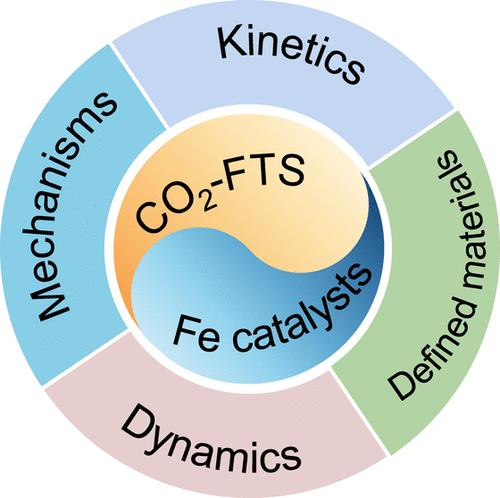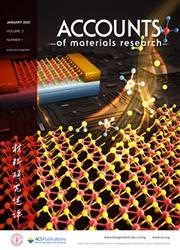From Understanding of Catalyst Functioning toward Controlling Selectivity in CO2 Hydrogenation to Higher Hydrocarbons over Fe-Based Catalysts
IF 14
Q1 CHEMISTRY, MULTIDISCIPLINARY
引用次数: 0
Abstract
The conversion of carbon dioxide (CO2) with hydrogen (H2), generated by renewable energy sources, into value-added products is a promising approach to meet future demands for sustainable development. In this context, the hydrogenation of CO2 (CO2-FTS) to higher hydrocarbons (C2+), lower olefins, and fuels should be mentioned in particular. These products are used in our daily lives but are currently produced by energy-intensive and CO2-emitting oil-based cracking processes. The environmental compatibility and abundance of iron (Fe) used in CO2-FTS catalysts are also relevant to sustainable development. The CO2-FTS reaction was inspired by the experience accumulated in long-term research on Fischer–Tropsch synthesis with CO (CO-FTS). A simple grafting of catalyst formulations and reaction mechanisms from CO-FTS to CO2-FTS has, however, been proven unsatisfactory, likely due to differences in surface adsorbates, chemical potentials of CO and CO2, and H2O partial pressure. These characteristics affect both the catalyst structure and the reaction pathways. Consequently, CO2-FTS provides higher CH4 selectivity but lower C2+-selectivity than does CO-FTS, which appeals to fundamental research to hinder CH4 formation.

从了解催化剂功能到控制铁基催化剂在 CO2 加氢生成更高碳氢化合物过程中的选择性
将可再生能源产生的二氧化碳(CO2)与氢气(H2)转化为高附加值产品,是满足未来可持续发展需求的一种前景广阔的方法。在这方面,应特别提及二氧化碳加氢(CO2-FTS)转化为高碳氢(C2+)、低烯烃和燃料。这些产品用于我们的日常生活,但目前是通过高能耗和排放二氧化碳的石油裂解工艺生产的。CO2-FTS 催化剂的环境兼容性和铁(Fe)的丰富性也与可持续发展有关。CO2-FTS 反应的灵感来自于长期研究二氧化碳费托合成(CO-FTS)所积累的经验。然而,从 CO-FTS 到 CO2-FTS 的催化剂配方和反应机制的简单嫁接已被证明并不令人满意,这可能是由于表面吸附剂、CO 和 CO2 的化学势以及 H2O 分压的差异造成的。这些特性会影响催化剂结构和反应途径。因此,与 CO-FTS 相比,CO2-FTS 具有更高的 CH4 选择性,但 C2+ 选择性较低,这就需要进行基础研究,以阻止 CH4 的形成。
本文章由计算机程序翻译,如有差异,请以英文原文为准。
求助全文
约1分钟内获得全文
求助全文

 求助内容:
求助内容: 应助结果提醒方式:
应助结果提醒方式:


